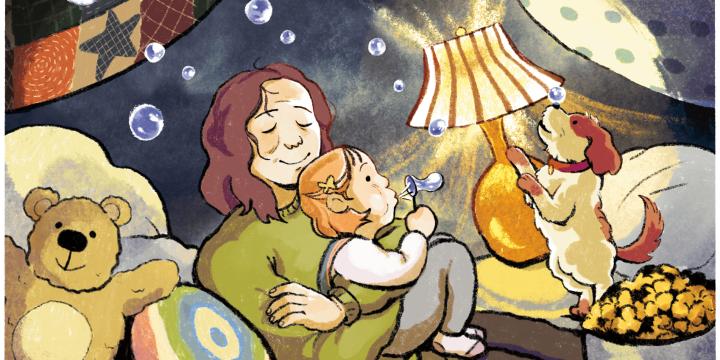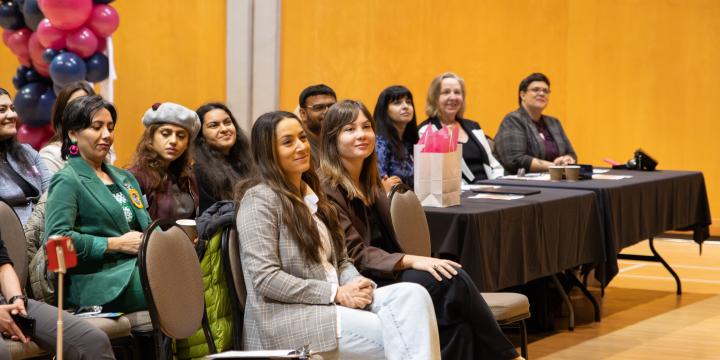
International Women’s Day is an opportunity to celebrate women’s achievements and to bring awareness to all the work still left to be done. While there are so many reasons to celebrate the successes and accomplishments of women and girls in Canada and around the world, this International Women’s Day we’re exploring how far we are from achieving gender equality in Canada.
Very far, unfortunately.
Over the years, Canada has made considerable strides toward gender equality. However, in 2019, Canada dropped four spots on a global index that ranks countries based on women’s well-being and equality. The 2019 Women, Peace and Security Index ranked Canada in the 11th spot behind Finland, Denmark, Iceland, Austria, the United Kingdom, Luxembourg, Sweden and the Netherlands. In 2018, Canada ranked seventh on the list.
According to Statistics Canada opinion data released in December 2019, 72% of Canadian women agree that “there are significant obstacles that make it harder for women to get ahead.” Fifty-five percent of men agreed with the statement.
Take economic equality, for example. A 2019 report released by The Canadian Centre for Policy Alternatives, argues that it would take Canada 164 years to close the economic gap between men and women at the current pace. Inequality is even further away for Indigenous women, women of colour and women with disabilities.
Violence Against Women
Being a woman in Canada still means living with risk. One in three women will experience some form of sexual violence over the course of their lives. In 2019, 118 women were killed in Canada - an average of one murder every three days. In 52% of these cases, the victim was identified as being in current or former intimate relationships with their killer. Family members were identified as being the killers in 31% of cases; 9% were friends or acquaintances and 8% were strangers.
In 2017, 75,399 women reported incidents of intimate partner violence to the police; tens of thousands more incidents go unreported. Estimates of unreported sexual assault and criminal harassment are even higher.
Women’s shelters and transition homes are often the starting point for women fleeing violence, but according to a 2019 report from Women’s Shelters Canada, every day, shelters have to turn away 379 women and 215 children because there is no space. More than half of women’s shelters in Canada aren’t able to meet their operating expenses each year.
To be an Indigenous woman in Canada is to be at an even greater risk of violence. Indigenous women, girls and 2SLGBTQQIA people face staggering and disproportionate rates of gender-based violence. According to the long-awaited MMIWG National Inquiry report, released in June 2019, Indigenous women are 12 times more likely to be murdered or go missing than any other women in Canada.
Education About Consent
Education is the most powerful tool to prevent gender-based violence. The #MeToo movement has started an international conversation about consent and the many nuanced ways it can be given or taken away, yet only one in three Canadians know what ‘sexual consent’ means. Most Canadian schools don’t teach baseline topics like what consent is, what constitutes a healthy relationship or even the names of intimate body parts.
Gender Pay Gap
A 2019 study by job search giant Glassdoor shows that women in Canada make only $0.84 for every dollar a man makes ($0.87 according to official government data). The overall Canadian gender pay gap is among the highest in the OECD, ranking 31st place out of 36 countries. The gap is even larger for racialized women and Indigenous women, who make 60% and 57%, respectively, of what non-racialized men earn.
The pay gap is not for lack of education. Nearly two-thirds of women aged 25 and older have completed post-secondary education, compared to less than half of men. Around half of the gender pay gap in Canada can be attributed to a concentration of women in lower-paying industries and jobs. Women-dominated industries tend to have lower average pay compared to male-dominated sectors. For example, in 2019, the hourly wage for truck drivers, who are overwhelmingly men, was $22.55. By contrast, the median hourly salary for early childhood educators, who are mostly women, was $18.12, according to Indeed.
Even in the public service sector, which has roughly the same number of men and women, three-quarters of women are concentrated in the lowest salary bracket.
Women also make up 76% of all part-time workers, which has an impact on their short- and long-term earning potential. Twenty-five percent of women cite child care responsibilities as their reason for working part-time, compared to just 3% of men. The lack of access to affordable child care is still a barrier to women entering the workforce. Despite recent government investments in child care, fees for most child care spaces in Canada cost over $1,000 per month, which are some of the highest among OECD countries, and there is a shortage of licenced spaces.
A significant fraction of the wage gap is still unexplained. A report released in January 2020 found that in every field of study, the gender pay gap starts right out of college, with women earning an average of 12% less than men one year after graduating. That gap widens to 25% five years after graduation. Same age, same area of study. Why are women being paid less?
In 2018, the government passed a pay equity act that would require federally-regulated workplaces with more than 10 employees to ensure men and women receive equal pay for equal work. The law, however, is ineffective in the private sector, where the gap is even more blatant than in the public sector.
Few Women's Voices in Leadership Roles and Politics
Who doesn’t remember the picture of the all-man premiers club in 2019? This picture is an example of the lack of representation of women in positions of power (not to mention other identities).

Canada’s premiers meeting at the Council of the Federation in Saskatoon, July 2019 | Photo published by Premier Scott Moe on Twitter
Just six years ago, Canada had six women premiers. In the summer of 2019, for the first time since 2008, there wasn’t a single woman heading the government of a Canadian province or territory. Canada has seen only 12 women hold this position, and Saskatchewan, Manitoba, Nova Scotia and New Brunswick have never had a woman as their head of government. In October 2019, Caroline Cochrane was elected the premier of the Northwest Territories and is now the only woman premier in Canada.
At the federal level, only 29% of all members of the Parliament are women. A CBC data analysis of the 2019 federal election results has found that women were once again underrepresented and more likely than men to find themselves running in hard-to-win ridings. For every 100 women running, only 16 won their races, while for every 100 men running, 29 were elected. Having fewer women’s voices in government positions means our government doesn’t accurately reflect our society.
A 2017 Statistics Canada study of 10,108 public, private and government corporations revealed 61% of those companies' boards had no women. The study also showed that only 18% of director seats were held by women.
Unpaid Care
In rural communities and developing countries, women can spend up to 14 hours a day on unpaid care work - about five times more than men. Here in Canada, this gap has been steadily narrowing over the last few years, but it hasn’t closed. Women still spend an average of 1.5 hours more per day than men on unpaid work activities, with about 3.6 hours spent on chores, household shopping and caring for children or other family members. Men tend to do more “episodic” work, like taking out the garbage, doing house and car repairs and mowing the lawn.
It’s 2020. Let’s all work together for a more equitable society.
At the YWCA, we recognize that many women experience overlapping oppressions. Achieving gender equality in Canada isn’t just about closing gaps between men and women. It’s important to understand that sexuality, race, gender identity, age and ability may impose different kinds of barriers for many women.
As a non-profit organization dedicated to achieving women’s equality, we work year-round to create opportunities that foster economic independence, wellness and equal opportunities for women and their families.
Join our mailing list to learn more about our advocacy work.
Banner photo by Mobilus In Mobili on Flickr.

